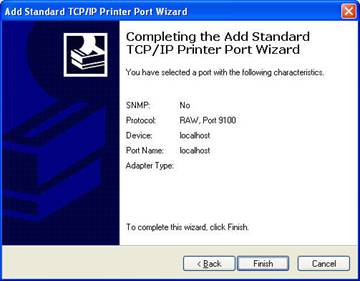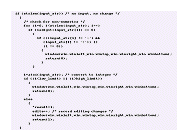

- SETTING UP KITEMATIC FOR LOCAL HOST FOR MAC
- SETTING UP KITEMATIC FOR LOCAL HOST INSTALL
- SETTING UP KITEMATIC FOR LOCAL HOST SOFTWARE
- SETTING UP KITEMATIC FOR LOCAL HOST CODE
- SETTING UP KITEMATIC FOR LOCAL HOST DOWNLOAD
Portainer is meant to be as simple to deploy as it is to use. Portainer is a simple management solution for Docker, it consists of a web UI that allows you to easily manage your Docker containers, images, networks, and volumes. As a result, Docker archived the Docker Kitematic Project in 2020. Kitematic’s documentation can be found here.ĭocker Desktop Dashboard has been introduced in the latest release of Docker Desktop, bringing the best of the Kitematic features to its Desktop customers.
SETTING UP KITEMATIC FOR LOCAL HOST DOWNLOAD
Download Kitematic directly from the Kitematic releases page. SETTING UP KITEMATIC FOR LOCAL HOST INSTALL
Install Docker Toolbox (on older systems that do not meet the requirements of Docker for Mac or Docker for Windows).
SETTING UP KITEMATIC FOR LOCAL HOST FOR MAC
Choose Kitematic from the Docker for Mac or Docker for Windows menu to get started with the Kitematic install.You can download and install Kitematic in one of the following ways:
 Automatically map ports, visually change environment variables, configuring volumes, streamline logs, and CLI access to containers. Seamlessly switch between Kitematic GUI or Docker CLI to run and manage your application containers. Easily search and pull your favorite images on Docker Hub. Fast and Easy Setup – one-click install gets Docker running and lets you control your app containers from a graphical user interface (GUI). Kitematic integrates with Docker Machine to provision a VirtualBox VM and installs the Docker Engine locally on your machine. Kitematic automates the Docker installation and setup process and provides an intuitive graphical user interface (GUI) for running Docker containers. It is an open-source project built to simplify and streamline using Docker on a Mac or Windows PC. Kitematic is a simple application for managing Docker containers on Mac, Linux, and Windows. The Dashboard provides a runtime view of all your containers and applications. To access the Docker Desktop Dashboard, from the Docker menu, select Dashboard. Quick visibility into ports being used by containers. Access to combined Compose logs from the UI to understand Compose applications. Access to container logs directly in the UI to search and explore container behavior. A GUI to abstract core information from the CLI. The Docker Desktop Dashboard offers the following : It provides a simple interface that enables you to interact with containers and applications and manage the lifecycle of your applications directly from your machine. With this context now, let us check the TOP 6 GUI tools for managing Docker environments.ĭocker Desktop Dashboard has been introduced in the latest release of Docker Desktop. Below GUI tools extensively uses API to interface with the Docker engine. Everything the Docker client can do can be done with the API. The Docker API has allowed limitless options for interfacing with Docker engine, containers, and images to emerge from CLIs to desktop applications and web-based management tools. Docker provides an API for interacting with the Docker daemon (called the Docker Engine API). Containers can get native access, each one running in a discrete process, taking no more memory than any other executable.ĭocker as we know, is an open platform for developers and sysadmins to build, ship, and run distributed applications, whether on laptops, data center VMs, or the cloud. They have better performance characteristics than virtual machines that only get virtual access to host resources through a hypervisor.
Automatically map ports, visually change environment variables, configuring volumes, streamline logs, and CLI access to containers. Seamlessly switch between Kitematic GUI or Docker CLI to run and manage your application containers. Easily search and pull your favorite images on Docker Hub. Fast and Easy Setup – one-click install gets Docker running and lets you control your app containers from a graphical user interface (GUI). Kitematic integrates with Docker Machine to provision a VirtualBox VM and installs the Docker Engine locally on your machine. Kitematic automates the Docker installation and setup process and provides an intuitive graphical user interface (GUI) for running Docker containers. It is an open-source project built to simplify and streamline using Docker on a Mac or Windows PC. Kitematic is a simple application for managing Docker containers on Mac, Linux, and Windows. The Dashboard provides a runtime view of all your containers and applications. To access the Docker Desktop Dashboard, from the Docker menu, select Dashboard. Quick visibility into ports being used by containers. Access to combined Compose logs from the UI to understand Compose applications. Access to container logs directly in the UI to search and explore container behavior. A GUI to abstract core information from the CLI. The Docker Desktop Dashboard offers the following : It provides a simple interface that enables you to interact with containers and applications and manage the lifecycle of your applications directly from your machine. With this context now, let us check the TOP 6 GUI tools for managing Docker environments.ĭocker Desktop Dashboard has been introduced in the latest release of Docker Desktop. Below GUI tools extensively uses API to interface with the Docker engine. Everything the Docker client can do can be done with the API. The Docker API has allowed limitless options for interfacing with Docker engine, containers, and images to emerge from CLIs to desktop applications and web-based management tools. Docker provides an API for interacting with the Docker daemon (called the Docker Engine API). Containers can get native access, each one running in a discrete process, taking no more memory than any other executable.ĭocker as we know, is an open platform for developers and sysadmins to build, ship, and run distributed applications, whether on laptops, data center VMs, or the cloud. They have better performance characteristics than virtual machines that only get virtual access to host resources through a hypervisor. 
SETTING UP KITEMATIC FOR LOCAL HOST SOFTWARE
Containers take up less space than VMs (container images are typically tens of MBs in size), and start almost instantly.Ī container image is a lightweight, stand-alone, executable package of a piece of software that includes everything needed to run it: code, runtime, system tools, system libraries, settings.Ĭontainers run apps natively on the host machine’s kernel.

Multiple containers can run on the same machine and share the OS kernel with other containers, each running as isolated processes in userspace.
SETTING UP KITEMATIC FOR LOCAL HOST CODE
Before we start, a little bit of intro on Containers, its an abstraction at the app layer that packages code and dependencies together.








 0 kommentar(er)
0 kommentar(er)
